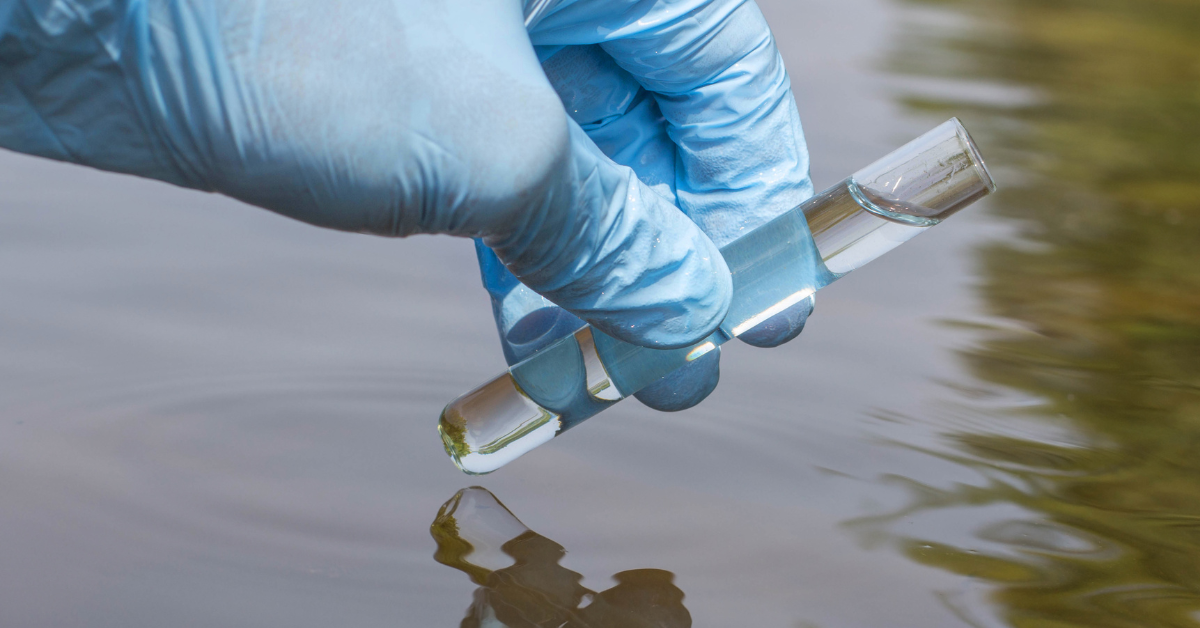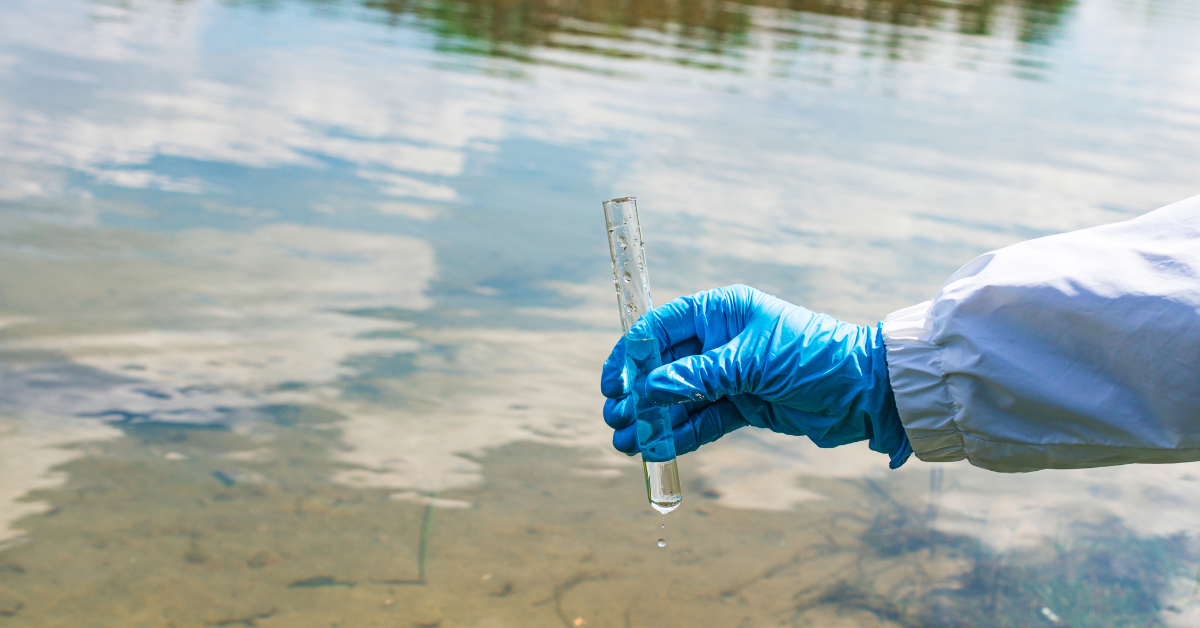The Ongoing Battle Against PFAS Contamination in the Environment

PFAS, the notorious ‘forever chemicals’, have been making headlines lately, raising concerns about their lasting impact on both human health and the environment.
PFAS, or per- and polyfluoroalkyl substances, are a large group of manufactured “forever chemicals” — they never disappear from the environment. These man-made chemicals that have been used in a variety of industrial applications and consumer products are increasingly becoming a major environmental concern.
Known for their persistence in the environment and the human body, these chemicals are notoriously difficult to break down. Recent news has shed light on the growing urgency to address PFAS contamination and the steps being taken globally to mitigate their impact. The Environmental Protection Agency recently implemented its regulations on PFAS contaminant levels, meaning water utilities must upgrade their efforts to filter out the so-called ‘forever chemicals.’
Understanding PFAS and Their Prevalence
PFAS are used because of their oil- and water-resistant properties, which make them appealing to manufacturers because of their wide application and uses. PFAS have been utilized since the 1940s in a wide variety of personal, consumer, and industrial products such as:
- Non-stick cookware
- Water-repellent clothing and gear
- Stain-resistant fabrics and textiles
- AFFF (aqueous film-forming foam), a common type of firefighting foam used to fight fuel-based fires
- Cosmetics
- Paints and sealers that promote a smooth finish
- Floor, automobile, and ski waxes and polishes
- Food packaging with grease and waterproof coatings, such as popcorn bags, fast food wrappers, or takeout containers
While some manufacturers have moved away from PFAS, the alternatives are not always safer. Their widespread use has led to extensive environmental contamination, particularly in water sources. Due to their chemical structure, PFAS are highly resistant to degradation, earning them the moniker “forever chemicals.”
Health and Environmental Impacts
PFAS are water-soluble and highly mobile, which makes them prone to groundwater contamination and difficult to filter out. As these substances do not break down naturally, our exposure to PFAS could persist for hundreds or even thousands of years.
Some of these chemicals are toxic and can build up in people, wildlife, and the environment, known as bioaccumulation. Research has linked PFAS exposure to various adverse health effects, including cancer, liver damage, decreased fertility, and increased risk of asthma and thyroid disease. These substances can accumulate in the human body over time, leading to chronic health issues. Environmentally, PFAS contamination affects water and wildlife, with bioaccumulation leading to significant ecological consequences.
Recent Developments in PFAS Regulation
In recent years, there has been a significant push towards regulating PFAS. In the United States, the Environmental Protection Agency (EPA) has been at the forefront of this effort. In 2023, the EPA proposed new drinking water standards for two of the most widely studied PFAS compounds: PFOA and PFOS. The proposed limits are set at levels so low that they are almost undetectable, reflecting the agency’s recognition of the significant health risks posed by these substances.
At the state level, several U.S. states have enacted their own regulations. For example, Michigan has established some of the most stringent PFAS drinking water standards in the country, while states like New Jersey, California and Colorado have also implemented strict regulations.
Global Efforts and Challenges
Globally, the European Union is moving towards comprehensive PFAS regulation. In early 2024, the European Chemicals Agency (ECHA) proposed restrictions on the manufacture, use, and sale of thousands of PFAS compounds. This ambitious regulation aims to significantly reduce PFAS emissions and protect both human health and the environment.
However, the challenge of managing existing PFAS contamination remains daunting. In many regions, historical use of PFAS has led to widespread contamination of water sources. Cleaning up these pollutants is complex and costly, requiring advanced technologies and substantial financial investment.
Innovations in PFAS Remediation
To address the pervasive issue of PFAS contamination, researchers and companies are developing innovative remediation technologies. One promising approach is the use of advanced oxidation processes (AOPs), which utilize powerful oxidants to break down PFAS molecules. Another method, electrochemical oxidation, involves the use of electricity to destroy PFAS compounds in contaminated water.
Bioremediation is also being explored as a potential solution. This technique uses microorganisms to degrade PFAS compounds into less harmful substances. Although still in the experimental stages, bioremediation offers a sustainable and cost-effective approach to PFAS cleanup.
The Role of Public Awareness and Advocacy
Public awareness and advocacy play crucial roles in driving regulatory action and technological innovation. Environmental groups and concerned citizens have been instrumental in bringing the issue of PFAS contamination to the forefront. Through community activism, lawsuits, and lobbying efforts, these groups have pressured governments and corporations to take action.
For instance, in the United States, several lawsuits have been filed against manufacturers of PFAS, leading to significant settlements and increased regulatory scrutiny. These legal actions not only provide compensation for affected communities but also serve as a deterrent against future environmental negligence.
Conclusion: A Path Forward
The battle against PFAS contamination is far from over. While recent regulatory developments and technological innovations offer hope, the scale of the challenge is immense. It requires a coordinated effort from governments, industries, scientists, and the public to effectively manage and mitigate the impact of PFAS on our environment and health.
As we move forward, continued research, stringent regulations, and robust public engagement will be essential in addressing this pressing issue. The legacy of PFAS contamination underscores the need for sustainable practices and vigilant oversight to prevent similar environmental crises in the future.
Confidently Conduct
PFAS Testing
Explore chromatography consumables from our trusted suppliers to achieve precise PFAS analysis with confidence at every stage.
We Simplify Your Procurement.
30+ YEARS OF GOVERNMENT LAB EXPERIENCE

75+ DEDICATED SALES AND CUSTOMER SERVICE PROS

MILLIONS OF LAB PRODUCTS FROM THOUSANDS OF BRANDS
Shop for Your Lab Needs at GovSci.com
GovSci is dedicated to being more than just a distributor of scientific laboratory products; we are your trusted partner in advancing critical research and innovation.
WE BUILD YOUR CUSTOM QUOTE
Our dedicated sales and customer service teams will provide personalized service throughout your workflow.
YOUR ORDER SHIPS IN UNDER 24H
We have millions of products in-stock with next-day delivery available at specific locations.

Explore Recent News on PFAS
Scientists found another way we’re exposed to ‘forever chemicals’: Through our skin
Clothes, cookware, floss: Colorado law to ban everyday products with PFAS
The EPA’s new limits on PFAS in drinking water face legal challenges
3M scientist’s findings on PFOS and company’s suppression efforts revealed
The FDA’s New Pre-Harvest Agricultural Water Rule: Impacts on PFAS-Contaminated Groundwater?
How Veolia Water in Wilmington is working to remove PFAS from drinking water
More Pentagon PFAS Drinking Water Analyses Spurred by EPA Rule
EPA Designates 2 PFAS Compounds as Hazardous Substances
Dayton wants to build $250M PFAS water treatment facility, the largest in US
Lawsuit Alleges Prime Hydration Sports Drink Contains PFAS
EPA Finalizes PFAS Drinking Water Regulation
EPA designates 2 forever chemicals as hazardous substances, eligible for Superfund cleanup
